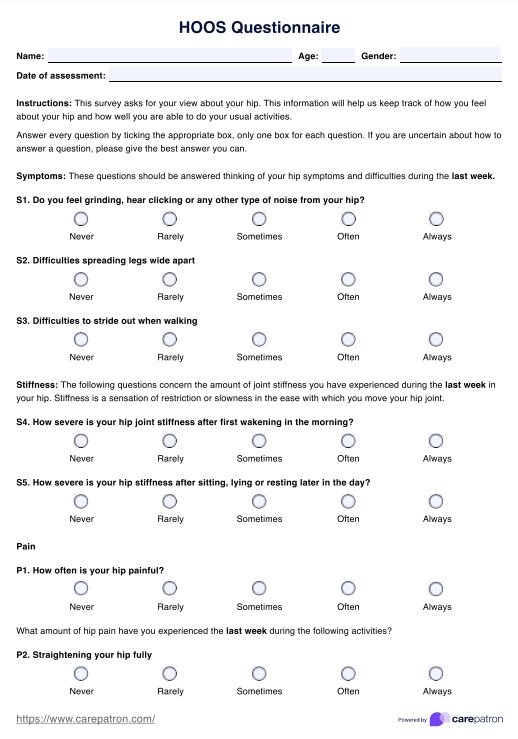The Hip Disability and Osteoarthritis Outcome Score (HOOS) is a standardized tool used to assess patient-relevant outcomes in individuals with hip disability and osteoarthritis. It evaluates various aspects, including pain, symptoms, daily activities, sports and recreational function, and hip-related quality of life.

HOOS Questionnaire
Get Carepatron's free PDF download of the HOOS Questionnaire, along with examples and instructions on how to use it.
HOOS Questionnaire Template
Commonly asked questions
Hip Disability and Osteoarthritis Outcome Score (HOOS) and Knee Injury and Osteoarthritis Outcome Score (KOOS) are both patient-reported outcome measures designed to assess the impact of joint disorders on daily living. While HOOS focuses on hip-related issues, KOOS addresses knee-related outcomes, allowing healthcare providers to evaluate and compare conditions effectively.
Grading Hip Disability and Osteoarthritis Outcome Score (HOOS) involves assigning scores from 0 to 4 for each item based on patient responses, with 0 indicating extreme symptoms and 4 indicating no issues. After scoring each item, the results are summed and converted to a scale of 0 to 100 to interpret the overall impact of hip disability and osteoarthritis.
EHR and practice management software
Get started for free
*No credit card required
Free
$0/usd
Unlimited clients
Telehealth
1GB of storage
Client portal text
Automated billing and online payments











